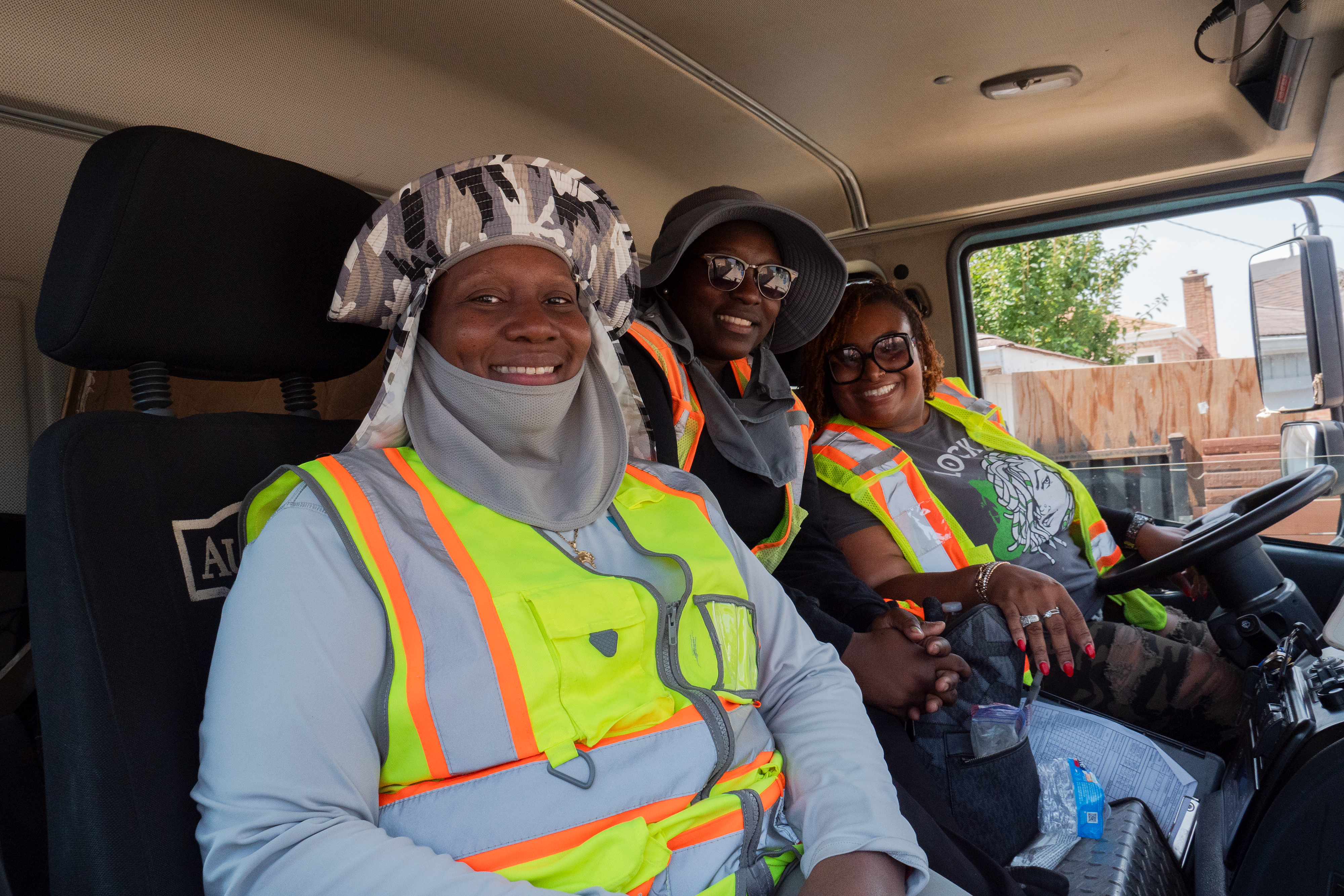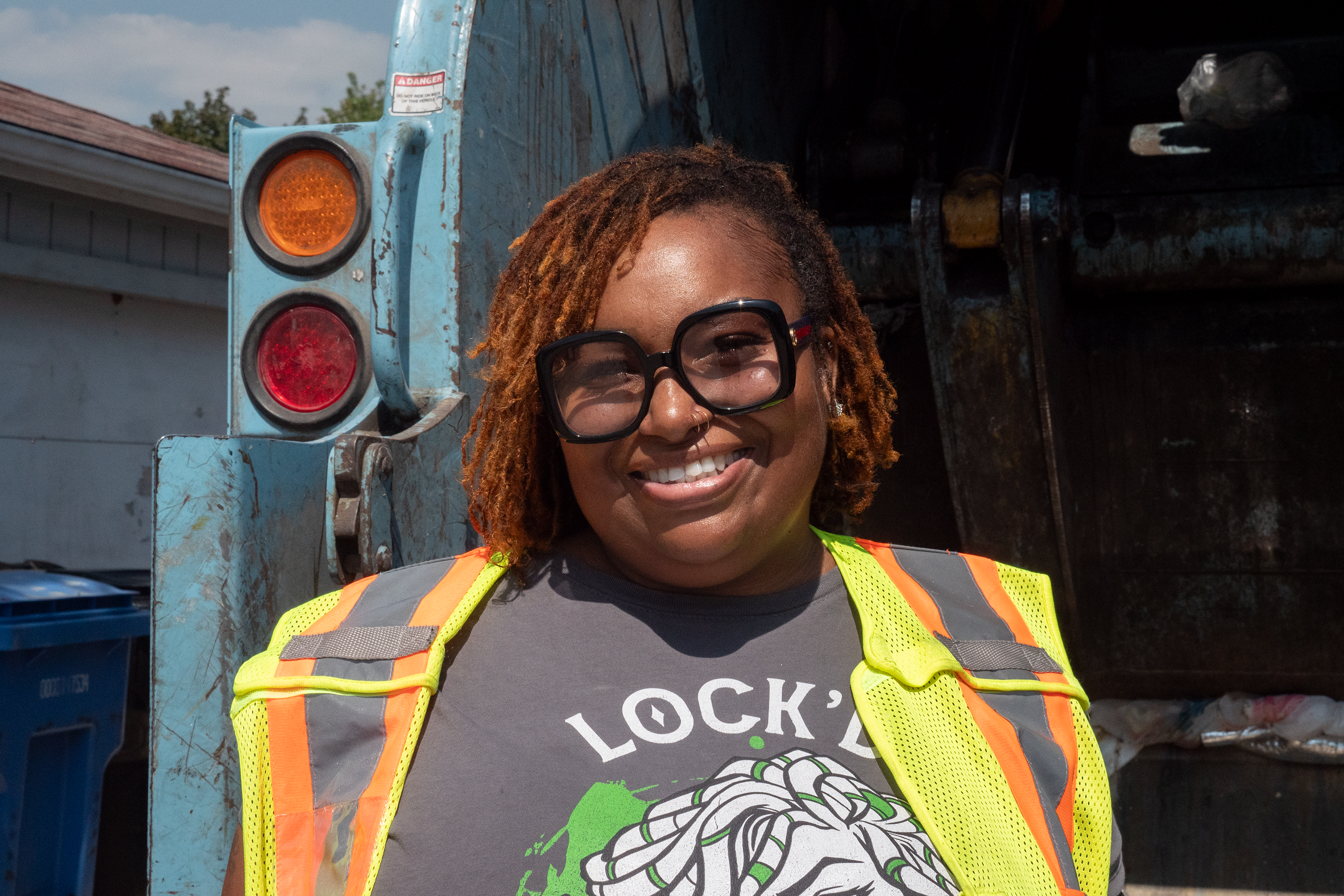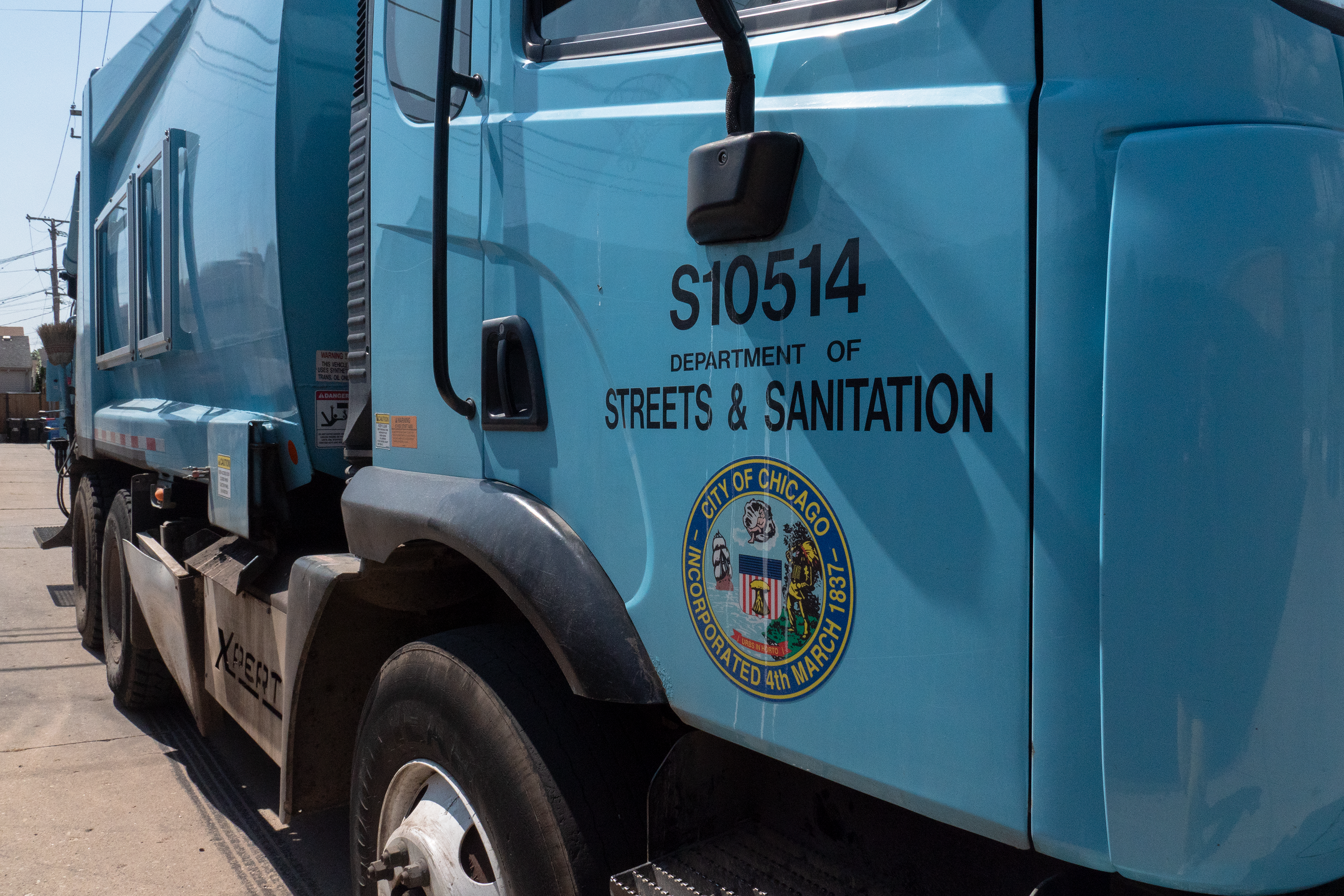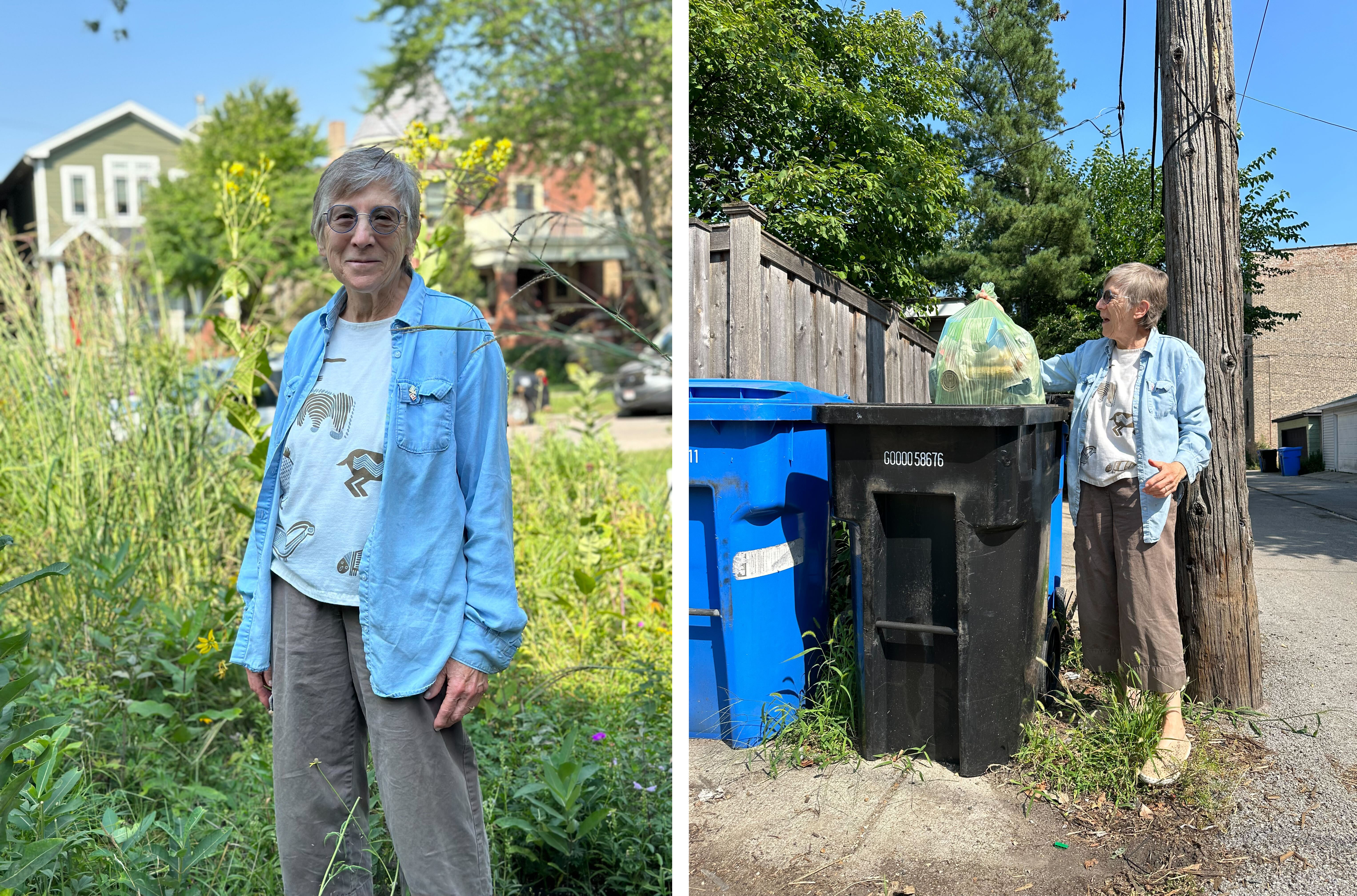Curious City listener Diane Judge thinks a lot about what she throws away. The longtime Ravenswood resident composts what she can, recycles what she can and consigns to the garbage bin only what she has to.
Because of that, she makes a trip to her alley to toss her garbage in the city-issued bin less often than most. But when she does, she sometimes runs into a Chicago Streets and Sanitation collection crew making their rounds.
That got her curious about the people who pick up her trash. Specifically, a few years ago, Diane got to know an all-women sanitation team whose route took them through her alley. She wrote to Curious City to find out more about what it’s like to be on an all-women garbage collection crew in Chicago.
So we met up with one such crew in Garfield Ridge to find out what a day in the life is like.

In Chicago, garbage from different types of residential buildings is collected in different ways.
Trash from “low density units” — that’s single-family homes and apartment buildings with four or fewer units — is collected by the city. People who live in larger buildings have to hire private trash haulers.
The city collects garbage from about 600,000 households — over half of the total households in the city. Mimi Simon, the director of public affairs for the Department of Streets and Sanitation, said garbage haulers for the city pick up about 800,000 tons of trash each year.

Joan Mitchell, Maretha Boyd and Jasilyn Williams are one of the only all-women sanitation teams currently working for the Chicago Department of Streets and Sanitation.
For the last three years, they’ve worked the same route together in the Garfield Ridge neighborhood.
Their weekday mornings start around 4:30 a.m., when they get dressed and “prepare for the smell,” Boyd said.
“I have incense on the truck to help with the smell and the bugs,” Williams explained. “And you chew gum,” Mitchell added with a laugh. “And you keep going.”
The three didn’t choose to work together, but rather were assigned randomly by the city. “We just was lucky,” Mitchell said. “And it was a bond.”
Like most Chicago alleys, the ones on their route have around 25 homes each, and they cover between seven and 15 alleys a day.

Keeping the other two calm on the job is Mitchell, who Boyd and Williams describe as the “mother” of the group. She’s the one who reminds them to stay hydrated and take bathroom breaks, and who coaches them through lifting heavy items into the truck.
Technically, if you’re a Chicago resident and the city collects your garbage, just about anything is fair game to be disposed of. Some of the most difficult things the crew has had to lift? Williams listed a few as she remembered them: “A couch… hot water tanks… basement sinks… hot tubs.”
While you’re supposed to call 311 to give notice about these larger items, people often don’t, so the three are sometimes surprised by the things they come across.
Boyd, Mitchell and Williams said the hardest things to get used to, when they first started the job, were the heat and the animals — including rodents and their marsupial friends.
“A live possum was in the can!” Mitchell recalled. “We dumped it. And I was like, ‘Oh, no, no! It's a possum. So we had to let it run out [of the truck].”

It takes about three hours to fill up a Streets and Sanitation garbage truck, which can hold between 16,000 and 25,000 pounds of trash. Once the truck is full, they take the garbage to a transfer station where it’s sorted before being sent on to a landfill.
The three agree that being a garbage collector is actually a pretty fun job. They have a real sense of camaraderie between their crew, and they love many of the neighbors they’ve gotten to know over the years.
Their one complaint is that they wish people were a bit more mindful when taking out their trash.
“[Some] people don't use garbage bags, so that's nasty,” Williams explained. “They treat garbage like garbage. … They don't treat garbage how it should be treated.”
“And we’re here to clean it up,” Mitchell added. "That's what we do."
So tie your garbage bags tight, keep it contained and don’t take it for granted that after you toss your trash in the bin, there’s someone who has to pick it up.

More about our question-asker
Diane Judge has lived with her husband in the Ravenswood neighborhood for about 40 years.
In her backyard, Diane keeps a large compost bin for her fruit scraps and grows native flowers to attract butterflies. And just beyond her back fence is the alley where she first met the all-women city garbage crew that prompted her to ask Curious City what it’s like to be a woman on the job.
When did she start thinking about garbage? “A long time ago,” Diane said. “I can't pin it on any particular time or event, but I read the news, I became aware of what we're doing to the Earth, and I don't want to contribute to that.”
These days, the retired nurse practitioner spends much of her time gardening, reading and caring for Monarch butterflies, which she raises in her home. She also writes letters about the use of single-use plastics, which she’d love to see politicians do more to limit.
Maggie Sivit is Curious City’s digital and engagement producer.


